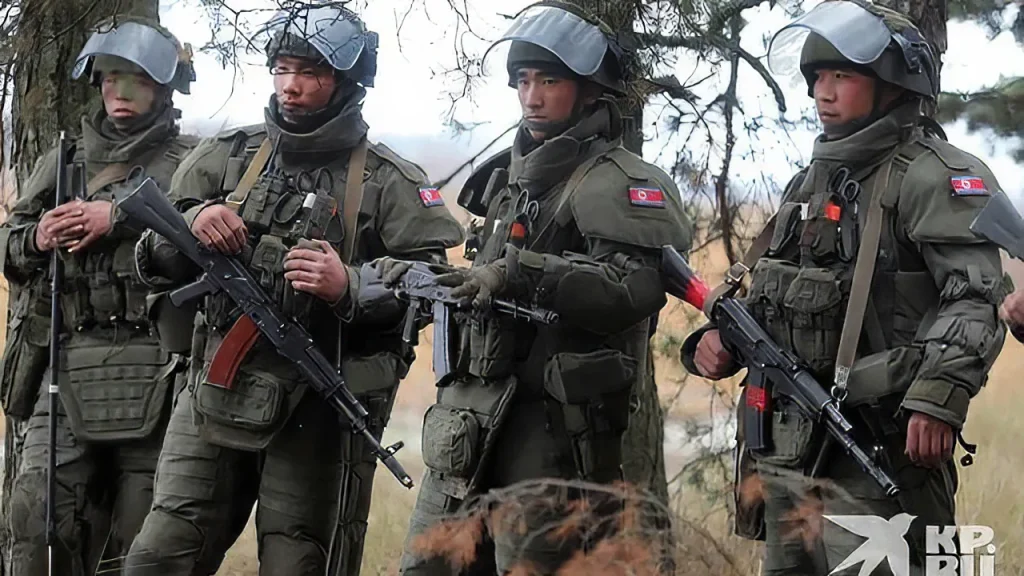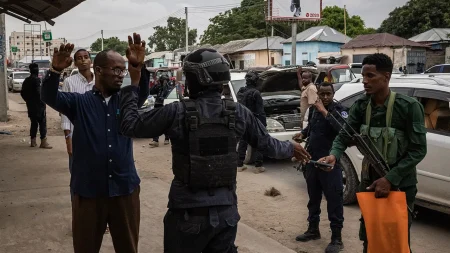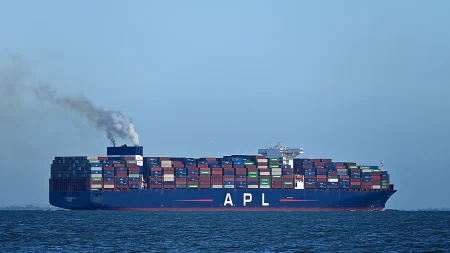North Korean Troops Join Russia’s Demining Efforts in Kursk
Recent images released by Russia’s defense ministry have pulled back the curtain on a growing military alliance between Moscow and Pyongyang. The photos show North Korean soldiers clearing mines in western Russia’s war-torn Kursk region, working alongside Russian forces to neutralize explosive threats in areas previously held by Ukrainian forces. The North Korean troops appear diligent and dedicated, handling detection equipment and receiving guidance from Russian engineers. Russian commanders speak highly of their new allies, with one officer using the call sign “Veles” describing them as “great lads” who “learn quickly, listen attentively and take notes.” Another Russian commander, known as “Lesnik,” emphasized that the North Koreans were operating “on an equal level with my sappers, carrying out the same tasks as my guys,” suggesting a genuine integration of forces rather than a merely symbolic deployment.
The deployment follows intense fighting in the Kursk region, where Russia claims to have repelled a significant Ukrainian incursion last year. According to various South Korean, Ukrainian, and Western sources, North Korea has sent approximately 14,000 troops to support Russia under a mutual defense agreement. These reports suggest staggering casualty numbers, with claims that more than 6,000 North Korean soldiers have been killed in combat operations, though these figures cannot be independently verified. Ukrainian President Volodymyr Zelensky offered an even more sobering assessment, stating that “out of up to 12,000 North Koreans sent to support Russia’s war effort, their losses are more than 4,000. I think two-thirds have died.” Meanwhile, Ukraine’s military intelligence chief, Lt. Gen. Kyrylo Budanov, has specifically mentioned the deployment of 6,000 North Korean engineers to Russia, indicating a significant commitment from Pyongyang.
The Russian military channel Zvezda claims that this new demining unit was “created and sent to the Kursk region by order of Commander-in-Chief Kim Jong Un” himself, highlighting the high-level nature of this cooperation. According to Russian sources, the North Korean engineers arrived with prior experience from operations in their homeland but received “extensive additional training” from Russia’s Engineering Troops. Russian instructors reportedly taught the North Koreans to handle “the latest NATO and Ukrainian mines” and to counter drone threats, suggesting that Russia is sharing advanced tactical knowledge with their North Korean allies. This knowledge transfer works both ways, as North Korean troops bring their own expertise to the battlefield while gaining practical experience with modern Western weaponry they might otherwise never encounter.
The imagery reveals the deep cultural and ideological components of the North Korean deployment. Before beginning each demining operation, Kim Jong Un’s sappers ceremoniously venerate the North Korean flag, describing this ritual as demonstrating their readiness “to carry out any order from the Supreme Leader.” This blend of military operation and political devotion exemplifies the nature of North Korea’s military culture. Technologically, the cooperation appears substantive, with North Korean engineers now reportedly using sophisticated Russian robotic demining platforms such as the Stalker and Uran-6. The East to West News Agency characterized the mission as aimed at reducing risks to Russian personnel, suggesting that North Korean troops may be taking on some of the most dangerous assignments in the conflict zone.
Russian military outlet Krasnaya Zvezda reports that Russian and North Korean demining teams face a “previously unseen density” of anti-tank and antipersonnel mines allegedly left by Ukrainian forces, claiming that many devices were manufactured by NATO members. The situation remains dire for civilians in the region, with 37 of the 64 settlements in the Bolshesoldatsky district reportedly still closed due to mine contamination. The demining teams continue to work under hazardous conditions, allegedly coming under Ukrainian artillery and drone fire as they attempt to clear areas for civilian return. The August 2024 Ukrainian incursion into the Kursk region resulted in months of occupation, with Russian President Vladimir Putin only announcing in April that Russian troops, supported by North Korean units, had successfully pushed Ukrainian forces out of the area.
This military cooperation signals a significant shift in global alliances, with North Korean leader Kim Jong Un recently stating that the countries’ military partnership would “advance non-stop.” This deepening relationship between Moscow and Pyongyang represents a concerning development for Western nations and Ukraine, suggesting a long-term strategic alignment rather than merely tactical cooperation. The images of North Korean troops working in Russian territory would have seemed unimaginable just a few years ago but now represent a tangible manifestation of changing geopolitical realities. As North Korea gains battlefield experience and potential access to advanced Russian military technology, and as Russia benefits from additional manpower in its prolonged conflict with Ukraine, both nations appear to be forging a military partnership that could have lasting implications for regional and global security dynamics. This cooperation may also provide North Korea with opportunities to circumvent international sanctions while gaining practical combat experience that could influence its military doctrine for years to come.















